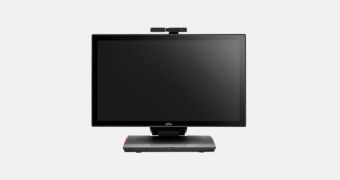Since time immemorial (well, not really, more like since Programma 101, the first desktop PC, was launched in 1964), it's been a normal part of life to turn off the PC when you're not using it. Fujitsu thinks it's time to change that though.
To that end, it implemented a new technology in its newest pair of all-in-one personal computers, a technology that can pull the PCs into a very deep sleep state.
To elaborate, the Esprimo X923 and Esprimo X923-T can enter a low power active mode, in which the hardware stays connected to the network but otherwise doesn't do anything.
So, unless an administrator tries to initiate remote assistance, or something else of importance happens over LAN, the computer will stay idle and draw so little power that you don't need to turn it off ever.
That's what Fujitsu says at least. We aren't perfectly sure it's all that advisable, and not just because resets have a way of clearing up process clutter and remove certain file system errors that a computer may accumulate over a long runtime.
The reason it might not be advisable is security: if you leave the system on all the time, it means that it's always available for hackers to break into.
We suppose it's true that encryption technologies are getting better every week, but hackers are learning more too.
Also, despite how good the security software might be in a company's mainframe, pretty much every company and server in the world has been hacked at least once.
Then again, chances are that your important work is backed up on your employers' servers or data centers on a regular basis, so it makes no difference if your computer is off for the count or not.
That said, we may as well take a look at the other specifications of the new Esprimo series. For one, they all have several CPU choices, from Intel Core i3 to Core i7.
They also get HDDs and SSD storage options, plus up to 16 GB of DDR3 RAM (random access memory).
Furthermore, they have 23-inch LCDs (liquid crystal displays) with a native resolution of 1920 x 1080 pixels (Full HD, as it is otherwise known). In truth, the only difference between the two newcomers is that one has a touchscreen and the other does not.
Specifically, the Esprimo X923 is the one featuring a normal LCD (IPS if you were wondering), while the Esprimo X923-T has a touch panel, with 10-finger support and (of course) gesture recognition. More information can be found on the product pages of the Fujitsu Esprimo X923 and X923-T.

 14 DAY TRIAL //
14 DAY TRIAL //